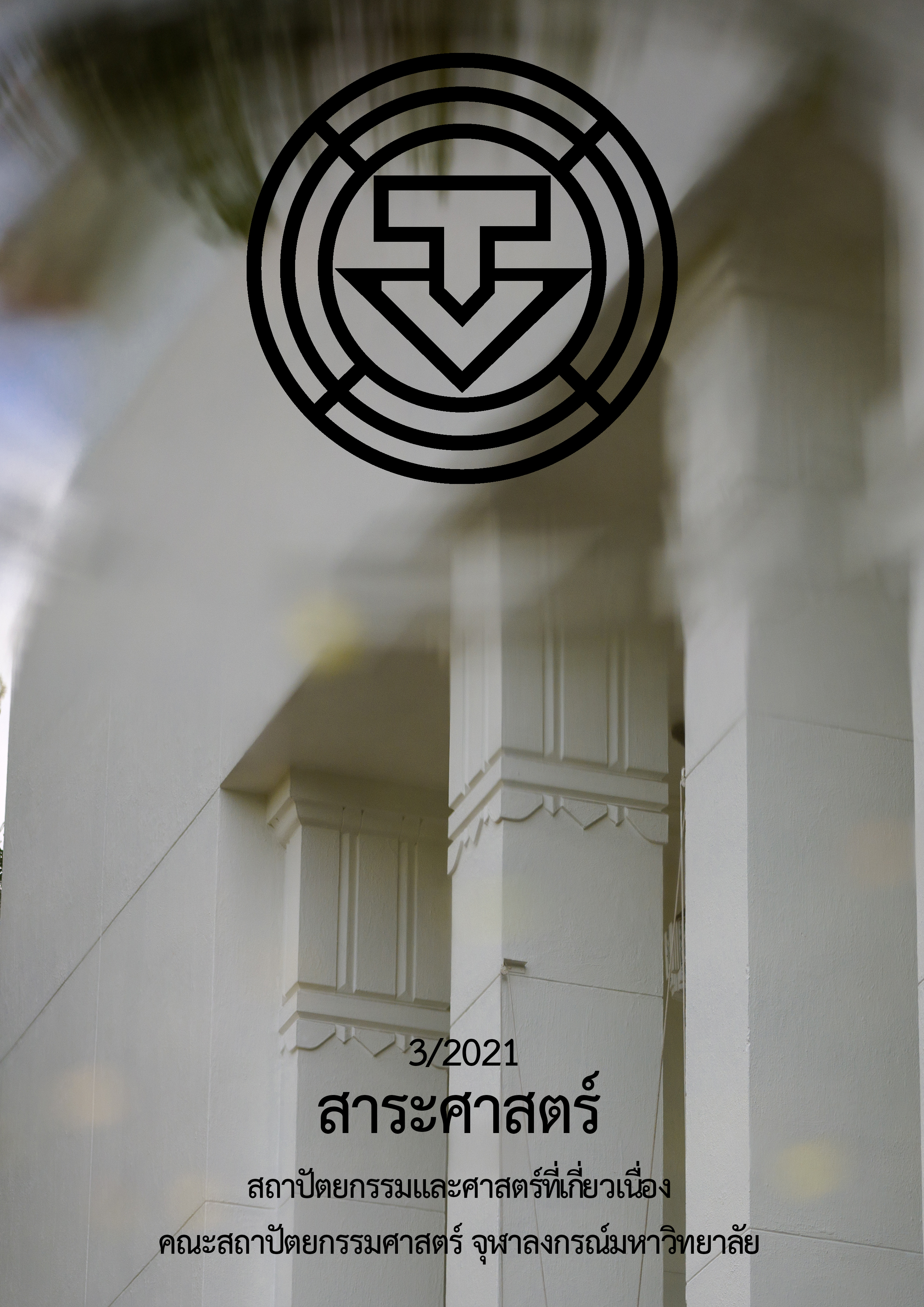Application of Japanese Vacant Houses Solution in Thai Context
Main Article Content
Abstract
In 2015, Japan saw a steady increase in vacant houses as high as 13.5% of its total housing. It was caused by many factors, especially; a burden from land tax in inheriting the residence.The central government implied "The Japanese Vacant Houses Law" to solve the problem of the “other types” of vacant houses that may cause harm to surrounded community. This law empowered local authorities to manage, demolition, and renovation. It also established Akiya Bank (vacant house bank) to coordinate the benefits between the owner of the vacant house and those who are interested in using it.
The purpose of this article was to clarify the approaches in solving vacant house problems in Japan, and taking lessons learned from the operational guidelines that can be applied in Thai context for Thai housing agencies can apply these guidelines, in order to prepare for the situation of vacant houses that may occur in the future. This study is documentary research with additional data from interview with experts. The result shows that vacant houses situation in Thailand is following the footsteps of Japan, including condominium for sale in major cities and vacant houses in rural areas caused by migration. Thus, Thailand should therefore be prepared by: (1) establishing the housing database to understand the real situation of vacant houses; (2) establishing housing policies to control the number of vacant houses and reusing them; and (3) managing vacant houses by allowing local governments to operate under the supervision of the National Housing Authority.
Article Details
References
กระทรวงการพัฒนาสังคมและความมั่นคงของมนุษย์. (2564, 19 มกราคม). ยุทธศาสตร์การพัฒนาที่อยู่อาศัยระยะ 20 ปี (พ.ศ. 2560 – 2579). สืบค้นจาก https://www.nha.co.th/download/แผนยุทธศาสตร์การพัฒนาท/
การเคหะแห่งชาติ. (2543). การพัฒนาที่อยู่อาศัยในประเทศญี่ปุ่น. กรุงเทพฯ: การเคหะแห่งชาติ.
ต่อพงศ์ จำจด. (2564, 5 พฤษภาคม). สัมภาษณ์.
ธรรมนูญ เลาห์ปิยะวิสุทธ์. (2558). ความต้องการของเจ้าของเรือนในการปรับปรุงซ่อมแซมเรือนไทยในพื้นที่โดยรอบตลาดน้ำอัมพวา อำเภออัมพวา จังหวัดสมุทรสงคราม. (วิทยานิพนธ์ปริญญามหาบัณฑิต, จุฬาลงกรณ์มหาวิทยาลัย).
พรสรรร วิเชียรประดิษฐ์. (2564, 7 กุมภาพันธ์). สัมภาษณ์.
ศูนย์ข้อมูลวิจัยและประเมินค่าอสังหาริมทรัพย์ไทย บจก. เอเจนซี่ ฟอร์ เรียลเอสเตท แอฟแฟร์ส. (2563, 9 พฤศจิกายน). มีบ้านว่าง 525,889 หน่วยใน กทม. สืบค้นจาก http://www.area.co.th/thai/area_announce/area_press. php?strquey=press_announcement3286.htm
ศูนย์ข้อมูลอสังหาริมทรัพย์ ธนาคารอาคารสงเคราะห์ [REIC]. (2564, 2 มิถุนายน). ที่อยู่อาศัยสร้างเสร็จเหลือขาย. สืบค้นจาก https://www.reic.or.th/Product/Chart/1/ที่อยู่อาศัย#
สำนักงานคณะกรรมการการพัฒนาการเศรษฐกิจและสังคมแห่งชาติ. (2563). ผลกระทบของการเปลี่ยนแปลงทางประชากรในประเทศไทย: สถานการณ์และข้อเสนอแนะเชิงนโยบาย. กรุงเทพมหานคร: สำนักงานคณะกรรมการการพัฒนาการเศรษฐกิจและสังคมแห่งชาติ.
สำนักงานสภาพัฒนาการเศรษฐกิจและสังคมแห่งชาติ [NESDB]. (2555). แผนพัฒนาเศรษฐกิจและสังคมแห่งชาติ ฉบับที่สิบเอ็ด พ.ศ. 2555 – 2559. สืบค้นจาก https://www.nesdc.go.th/download/article/article_20160323112431.pdf
สุขุมาภรณ์ จงภักดี. (2564, 5 พฤษภาคม). สัมภาษณ์.
Bektas, Yakup. (2014). Vision of vanishing Japan. Retrieved from https://www.wmf.org
Fukushima, Shigeru. Professor at the Faculty of Urban Science, Meijo University. (2021, March 3). Interview.
Ishihara, Kazuhiko. Professor at the College of Policy Science, Ritsumekan University. (2021, March 17). Interview.
Ishihara, Kazuhiko. (2019a). About countermeasures for vacant house in Osaka prefecture. Paper presented in the Workshop.
Ishihara, Kazuhiko. (2019b). The problem of vacant houses in Japan and the influences of aged society. Paper presented in the Workshop.
JICA. [n.d.]. Second study on population and development. Retrieved from https://www.jica.go.jp/jica ri/IFIC_and_JBICI-Studies/english/publications/reports/study/topical/ssic/pdf/ssic_03.pdf
Manda, Peter. (2015). Preparing our housing for the transition to a post-baby boom world: Reflections on Japan’s May 26, 2015 vacant housing law. Journal of Policy Development and Research, 17(3), 239-248.
MLIT. (2015a). Akiyanadonikannsurutaisaku wo sogouteki katsu keikakutekinijisshisuru tame no kihonntekinashishinn (Basic policy to implement a planned and general response to vacant housing). Retrieved from http://www.mlit.go.jp/common/001080537.pdf
MILT. (2015b). White paper on land, infrastructure, transport, and tourism in Japan. Tokyo: MILT. Retreived from https://www.mlit.go.jp/common/001113559.pdf
Real Estate Japan. (2019). Akiya banks in Japan – Links to vacant house databases by prefecture. Retrieved from https://resources.realestate.co.jp/buy/akiya-banks-in-japan-links-to-vacant-house-databases-by-prefecture/
Statistical Bureau. (2020). Statistical handbook of Japan 2020. Tokyo: Ministry of Internal Affairs and Communications.
TomoMachizukuri Kobo. [Homepage on the internet]. Machiya restoration project related to Ryoma. Retrieved 2020, May 5, from http://www.vesta.dti.ne.jp/~npo-tomo/top/toha.html
Urban Renaissance. (2016). Profile of UR. Retrieved from https://www.ur- net.go.jp/profile/english/pdf/profile_en_all.pdf
VHASS. (2015). Akiya to hito o tsunagi, omoi o tsumugu, akiya banku. Retrieved from http://akiya-bank.org/blog/
Yoshida, Tomohiko. (2021). Vacant house issue in Japan. Laboratory on Housing Studies & Urban Planning, Faculty of Policy Science, Ritsumeikan University. Paper presented in the joint workshop of Chulalongkorn University and Ritsumeikan University.
Zhang, Beibei. (2020). Why Is Japan’s housing vacancy rate soo high? A history of postwar housing policy. Social Science Japan Journal, 23(1), 65–77.


